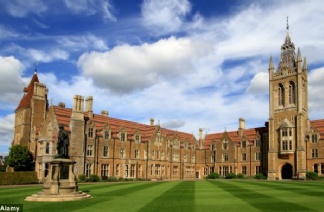在2017年1月份SAT首考中,写作部分考到哪些知识点,考试难度如何?下面2017北美1月SAT 写作考试真题回顾,考生可以自己做一下练习然后核对范文解析,对比之后找到不足进行针对性复习。
2017北美1月SAT 写作部分的阅读文章选自美国前第一夫人Laura Bush的“A New Wave ofNational Parks”,原文如下:
1、Our first national park was named not aftera mountain or forest but for a mighty river: Yellowstone. For centuries, the world’s waters have connected us. Explorers, traders, scientists and fishermen have traveled our oceans and rivers in search of new resources and a greater understanding of the world. This Wednesday, as we mark World Oceans Day, wemust intensify our efforts to better understand, manage and conserve our watersand marine habitats if they are to remain a vibrant source of life for future generations.
2、Great progress has been made in protecting our environment over the past several decades, but too little of that progress addresses 70% of the world’s surface—our oceans. Less than one-half of 1% ofthe world’s oceans are protected in ways that will ensure they stay wild. Too often overharvesting depletes what should be a lasting bounty of fish. In some parts of the oceans today up to 90% of large fish are gone from natural ecosystems.
3、Our oceans are also where much of our trashand pollution end up. Plastics and other pollutants difficult to break down arekilling fish, turtles and birds. Currents in the Pacific have created a plastic garbage dump twice the size of Texas. A few years ago, I visited Midway Islandin the middle of the Pacific Ocean and was shocked to find debris killing birdsthat could not distinguish between plastic refuse and squid.
4、We are at risk of permanently losing vital marine resources and harming our quality of life. Overfishing and degrading our ocean waters damages the habitats needed to sustain diverse marine populations.Perhaps the most vital function our oceans serve is that of climate regulator — they produce oxygen, reduce pollution, and remove carbon dioxide. If we don’t protect our oceans, we could witness the destruction of some of the world’s most beautiful and important natural resources.
5、Fortunately, Yellowstone offers a blue printfor protecting our oceans. President Ulysses S. Grant created Yellowstone National Park in 1872 at a time when large wild areas on the frontier were atrisk. The founding of Yellowstone sparked a 50-year period during which many ofthe national parks we enjoy today were created. Our country began to see thevalue of setting aside large territories that would remain wild forever. Our national parks play an outsized role in maintaining healthy and diverse wildlife populations far beyond their boundaries. Many of the elk, deer andwolves seen throughout Western states trace their lineage to populations in Yellowstone.
6、In the early 1970s, the U..S. established amodest program to conserve some of its most important marine areas, called the National Marine Sanctuary System. In June 2006 and again in January 2009, theU.S. expanded the concept of parkland and wilderness preserves in the sea when President Bush designated four marine national monuments in the Pacific Ocean.
7、The first of these, the Marine National Monument, encompasses a 100-mile wide area of nearly pristine habitat northwest of Honolulu, Hawaii, and was named a Unesco World Heritage site in 2010. Asecond area, the Marianas Trench Marine National Monument, includes the world’s deepest canyon and is home to some of the oldest and most resilient forms oflife on the planet. The other two monuments are the Pacific Remote Islands dispersed through out the Pacific Ocean and the Rose Atoll in American Samoa.
8、These four monuments cover more than 330,000 square miles and add up to the largest fully protected marine area inthe world, larger than all of our national parks and wildlife refuges combined.They support vast numbers of fish, breathtakingly beautiful coral habitat, anda remarkable abundance of sharks—often seen as markers of an ecosystem’shealth.
9、In the coming years, protecting our oceans will be even more important. Nearly half of the world’s population lives within 60 miles of an ocean, and that percentage will rise as more people settle incoastal communities. Today there are few waters outside the reach of human exploitation. Our wild ocean frontiers are disappearing and, like we did with Yellowstone, it is up to us to conserve the most important wild areas thatremain. Doing so will preserve something that is all too easy to destroy but impossible to replace: natural, undisturbed incubators of life.
文章分析
P1:开门见山,通过介绍黄石国家公园引出主论点:we must better understand, manage and conserve our waters and marine habitats。
这一段和官方样题Let There Be Dark第一段简直神似,我把原文贴在下面:
At my family’s cabin on a Minnesota lake, I knew woods so dark that my hands disappeared before my eyes. I knew night skies in which meteors left smoky trails across sugary spreads of stars. But now, when 8 of 10 children born in the United States will never know a sky dark enough for the Milky Way, I worry we are rapidly losing night’s natural darkness before realizing its worth. This winter solstice, as we cheer the days’ gradual movement back toward light, let us also remember the irreplaceable value of darkness.
P2:通过海洋和陆地保护的对比突出too little progress has been made in protecting our oceans,之后用鱼类被过度捕捞作为证据支持。
P3:继续给证据,海洋垃圾和污染威胁海洋生物和鸟类生存。
P4:讲如果不保护海洋将会造成的严重后果:permanently losing vital marine resources and harming our quality of life。
P5:给出solution,建造国家公园,但不要误解为国家公园保护海洋,注意第一句里的blueprint蓝图,意思基本上是国家公园对陆地动物的保护为我们保护海洋指明了方向。段落中给出的证据也只是支持黄石国家公园有利于园内和园外很大范围内的动物,如elk, deer and wolves。
P6:这段才提到美国模仿陆地上的国家公园在海洋里设置类似保护项目,如the National Marine Sanctuary System和four marine national monuments in the Pacific Ocean。
P7:具体介绍上一段最后说的那四个marine national monuments,基本上只是说了下名字,没有太有价值的信息。
P8:继续介绍四个marine national monuments,细说其好处和价值,如为鱼类和珊瑚提供保护,用证据支持其有效性,从而支持作者主论点。
P9:重申主题,强调今后保护海洋的重要性,又给出了最后一条理由:越来越多人会生活中靠近海洋的地区,而作为natural, undisturbed incubators of life的海洋却每况愈下。
以上为2017北美1月SAT 写作考试真题及解析内容,希望帮助大家通过有效的练习提高写作水平。

















